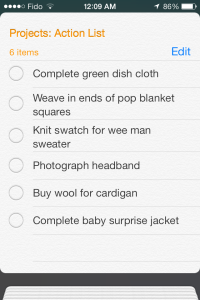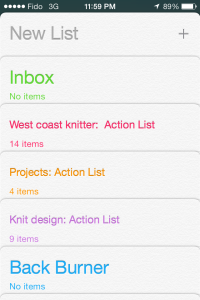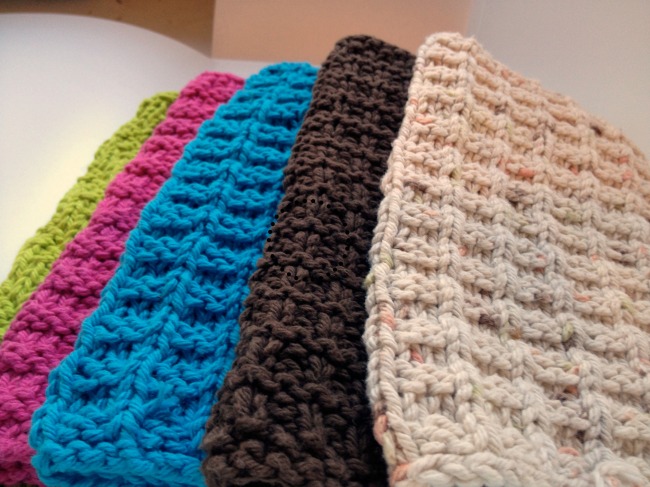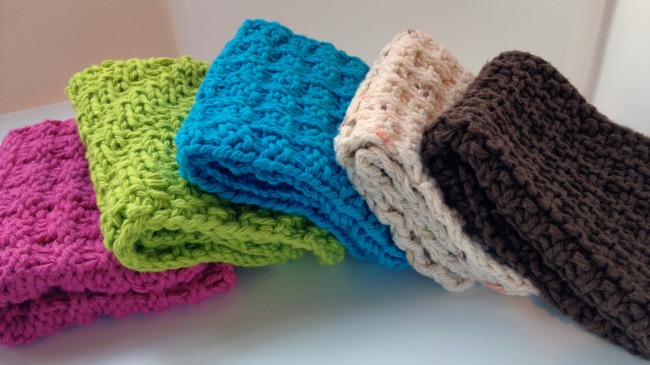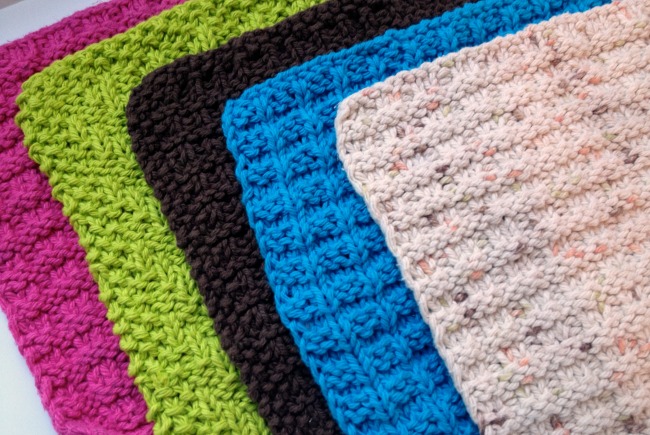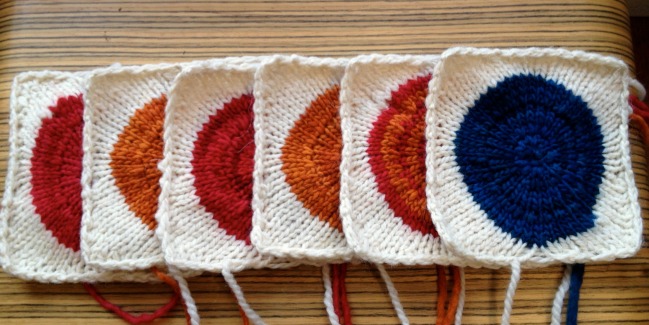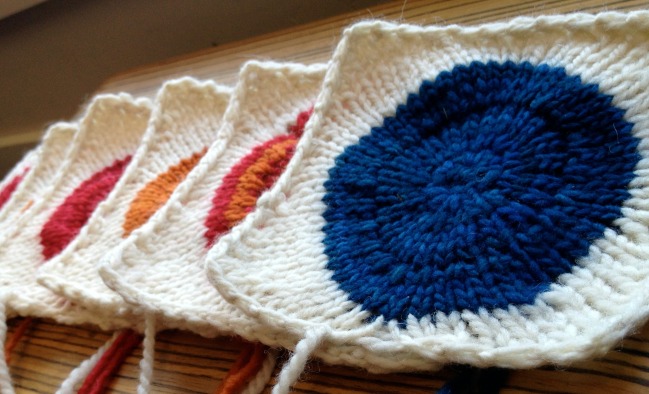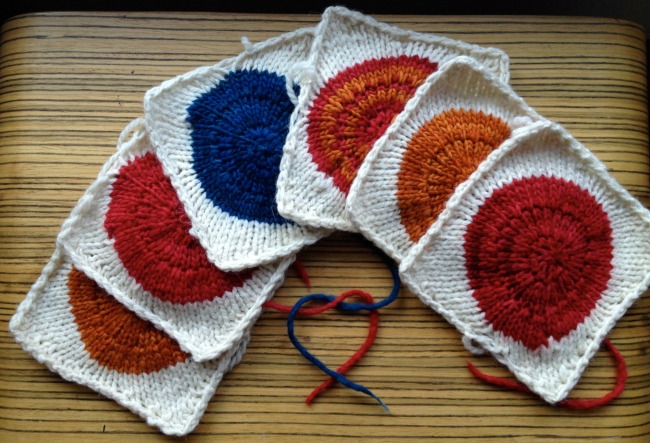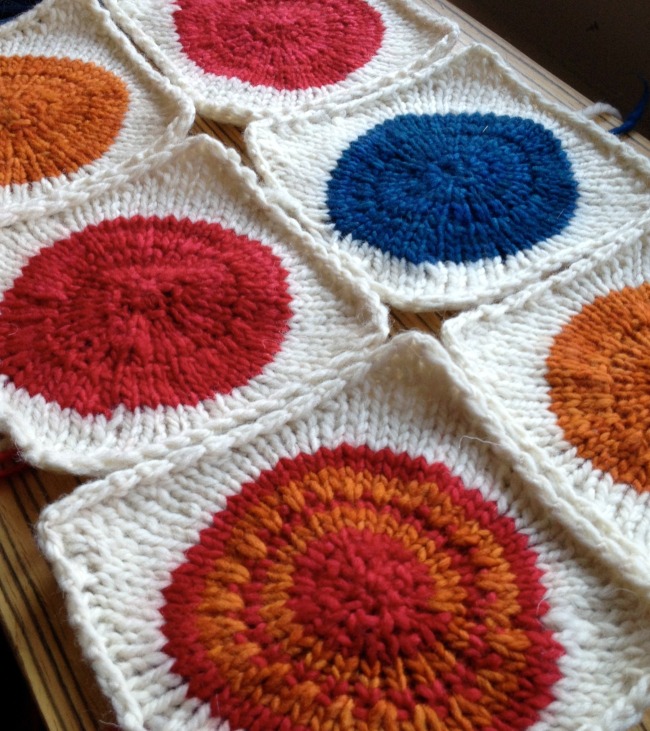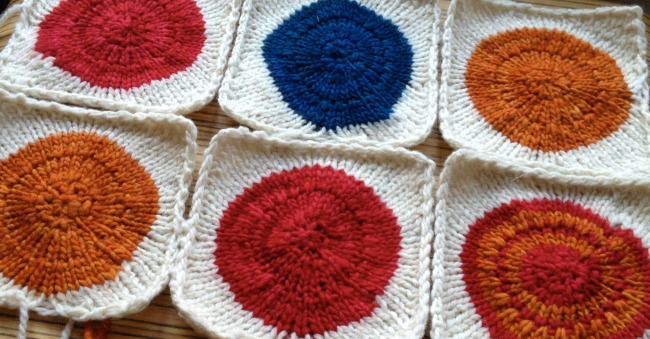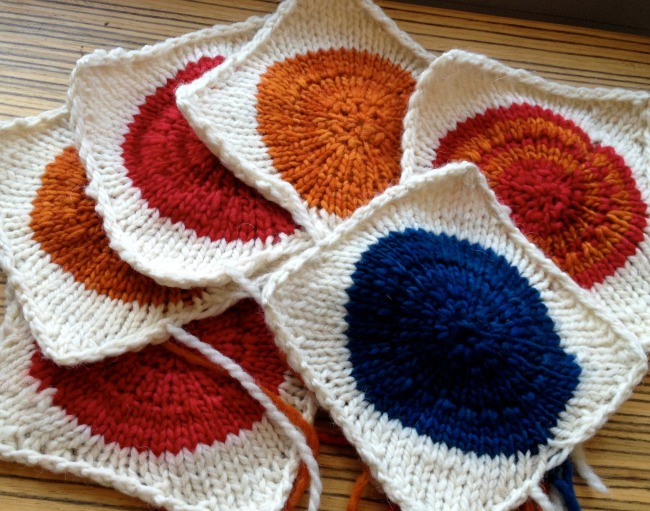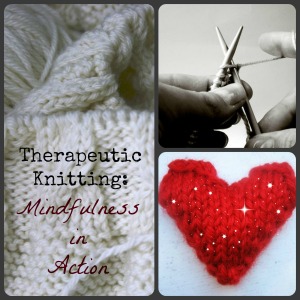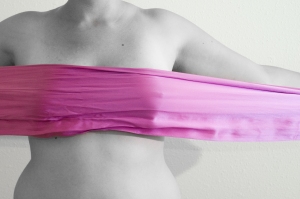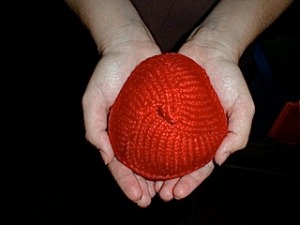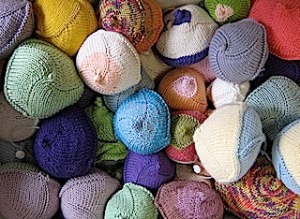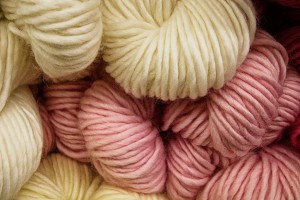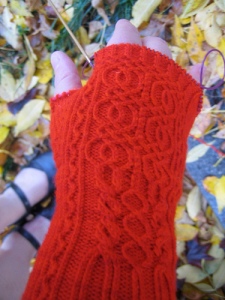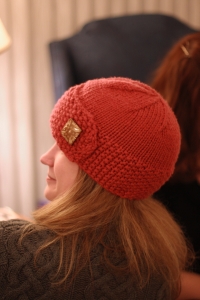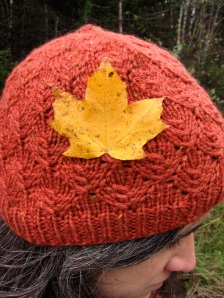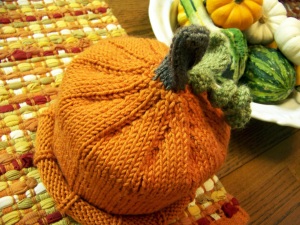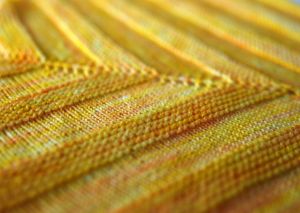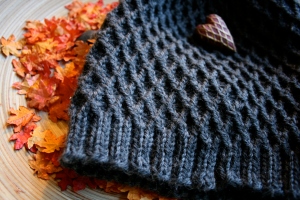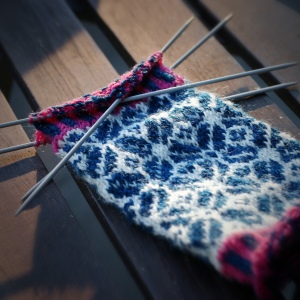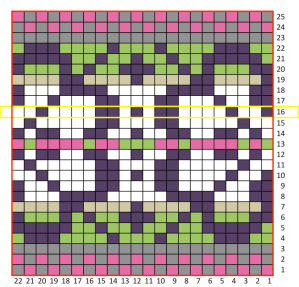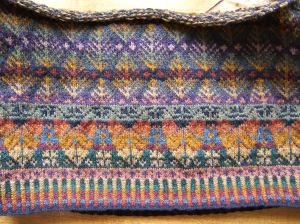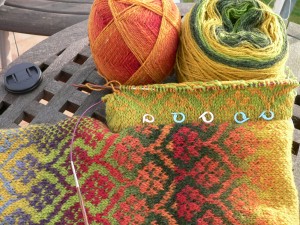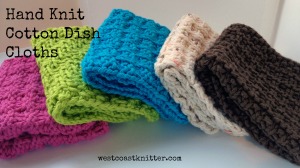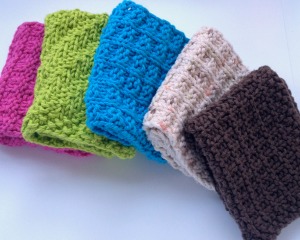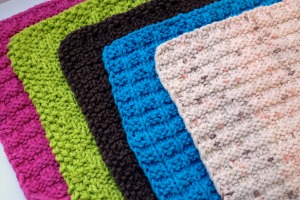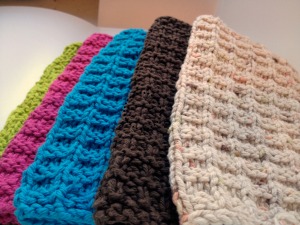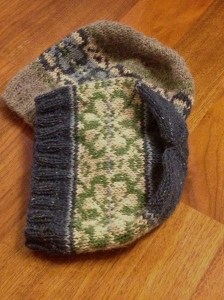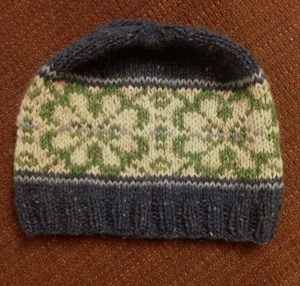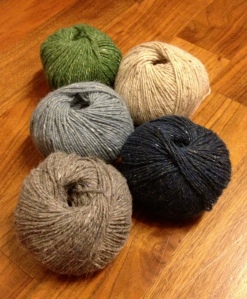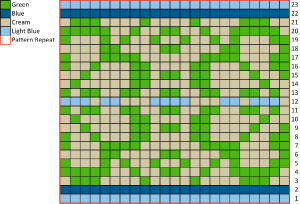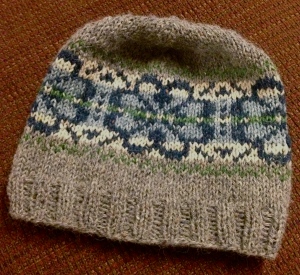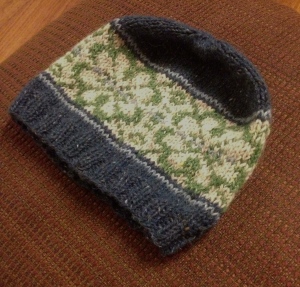When you have young children, you don’t have much time to yourself. When those moments of free time do come, we can feel totally overwhelmed by all of the things we want to do (never mind all the things that we “need” to do, or feel that we “should” do).
When you do get some free time, you know it’s not going to last for very long. So, if you really want to be productive and get anything done, you need to have a plan – ahead of time – for how you want to use that precious opportunity. If you want to get anything done, you need to be organized and you need to have a system that works for you. This applies to everything – including knitting.
Here, I’m going to share with you a few tips and tricks for getting more knitting done, while raising young children. This includes a closer look at my own personal system of organization, which I have developed over the years from David Allen’s work-life management system – “Getting Things Done” (also know as GTD). It’s what works for me, and it can work for you too!
Before we get to the 5 Steps to Getting More Knitting Done, I’d like to offer a few tidbits of personal wisdom about doing what you love, and taking time for yourself when raising kids.
1) Let go of the guilt, and give yourself permission to sit down and knit.
Acknowledge any feelings of guilt associated with doing what you want to do and then let it go. Let it just float away. You may be saying to yourself “Oh, but I should be folding that laundry.” No you shouldn’t. You should be taking some time for yourself. Sit down, and knit.
2) Never, ever do things that you don’t WANT to do during nap time.
This can also be understood as ALWAYS do something you WANT to do during nap time. At the moment, my favorite thing to do during nap time is nap, but if I’m not napping, I’m knitting.
“Oh, but it’s so much easier to wash the dishes, cook dinner, [insert other things you need to do], when the baby is sleeping.” Yes, it is. But you can do it when the baby is awake too. Find a way to make it easier to do these things when the baby (or kids) are awake. If your child is napping, take time for yourself. Relax. The other things can wait, and they will get done. Sit down, and knit.
3) Take your knitting everywhere with you.
Life with kids is busy. Time is scarce. It is difficult to find large chunks of time to yourself to do anything. But, over the course of the day there are lots of smaller chunks of free time, that when put together may add up to an hour or two! Surprising right? Imagine, if you could get an hour (or more) of knitting in a day! It can be done. You just have to look at your time differently. Keep your eyes open and you will see more opportunities to get some knitting done.
4) Focus on doing a little bit, often.
Yes, before you had kids, you could finish a hat in a weekend. Yes, it might take you three months to finish a hat now that you have kids. So what? Accept that getting projects finished will take longer, but that’s ok. You’ll get it finished if you just keep moving forwards. Slow and steady wins the race!
When I talk about “free time”, I’m not just talking about nap time. I’m talking about any other small amount of time that you could call “free”. The question is: when you have 5, 15, or 60 minutes to do something, do you have a plan? Do you know what you are going to do during that time? If you don’t, you’re likely to waste that precious time just stressing about what you want to do. When you finally decide what you want to do, the time will be gone! You need a plan, so that you can maximize every opportunity – big and small – to get more knitting done.
Let’s say that you really want to knit this cute baby hat. Starting a new knitting project isn’t as simple as picking up a set of needles, some random ball of yarn, and casting on a few stitches . No. You need to go to the yarn store, choose the yarn that you want to use (if you’re not using the one in the pattern), and buy needles and other notions. Next, you need to knit a gauge swatch (I know you won’t, but you really, really, should), then maybe another, until you have the correct gauge. Only after you have done all of that, are you FINALLY ready to start your new project.
Once you have cast on, and your project is in motion, it’s easy to start and stop, and work on it when you have time. It’s the getting started part that is the hardest! So again, you need a plan. You need to be organized. This is the only way you are going to get things done. Here’s what to do:
5 Steps to Getting More Knitting Done:
1) Write everything down.
The first step is to get into the habit of writing everything down. Thoughts, ideas, things to do, knitting projects you want to make, goals, dreams – anything you want to remember. It doesn’t have to be in one place at this point, just get it down somewhere. Carry a notebook, use notes on your phone, send yourself an email, use Evernote, or WorkFlowy. The key is to just get the idea down. If you don’t, it will be quickly forgotten and it won’t get done.
2) Create a Master Inbox.
Choose one place to amalgamate everything – preferably, somewhere that will always be available to you. It could be your notebook, your phone, or your computer. Whatever you decide, it has to work for YOU. For example, I use the “Reminders” app on my iphone. It’s a simple check list – nothing fancy or distracting. It’s at my fingertips and it is quick and easy to add new items. That is important.
Create an “Inbox” and insert all of your random thoughts, ideas, “to dos”, goals, etc., into it. The key is to get it all into one place. It’s not very helpful to have multiple lists floating around – especially if they are sticky notes, partial to getting lost! It is not organized at this point, but don’t worry about. Consider it your “to-be-sorted-later dumping place”.
3) Make each item “actionable”.
The next step is to go through your “inbox” and re-write each item to make it actionable. It helps to start each item with a verb – a “doing” or “action” word. For example:
- SEARCH Ravelry for hat pattern
- PRINT hat pattern
- KNIT gauge swatch for baby hat
- BLOCK baby hat
- TAKE photos of baby hat
Some items will be too big to do all in one sitting, so you might want to consider it a “project” and then break it down into actionable steps. Actionable steps should be small enough to complete in less than an hour, and preferably 5-15 minutes. If the item can be done in less than a minute, DO IT NOW.
4) Organize.
Each item will fall into one of the following categories: 1) Actionable – ready to go; 2) A project – needs to be broken down into bite-sized, actionable steps; 3) “BackBurner” – something you want to do in the future (and don’t want to forget), but not actionable right now; 4) Delete.
As you go through your inbox, organize each item into the appropriate category. Move your actionable items into your “Action List”; put items to do later into the BackBurner List, and Delete anything that you don’t want to take further action on.
5) Use it! Make it a Habit
Once your Action List is complete, commit to using it for at least 30 days. It will take some time for it to become a habit, but I guarantee that it will help you become a more productive knitter!
I actually have 3 action lists. 1) West Coast Knitter (blog) 2) Knitwear Design 3) Knitting Projects. I find it easier to have these action lists separate, because when I have free time, I usually know if I’m looking to complete a task for my blog, or whether I want to move forward with one of my knitting projects. I just look at the appropriate list and choose an actionable item from there.
At the end of the day, if you want to get more knitting done while you are raising young children, you need to be organized. You need give yourself permission to do what you love, and make it a priority. Find a system that works for you and enjoy the benefits of having more time to knit every day!
I’d love to hear your own tips, tricks and personal tidbits for Getting More Knitting Done. Please leave your comments below, or tweet me @westcoastknits (#GMKD).
Be good to yourself, and good luck!
Happy Knitting x


